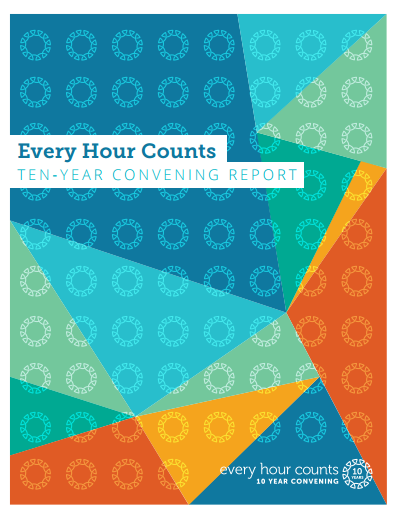Every Hour Counts Ten-Year Convening Report
Every Hour Counts Publishes Report with Lessons from Ten Years in the Expanded-Learning Field and Insights for the Future
In 2005, a group of intermediary leaders and prominent funders came together to create a shared vision for the after-school field and develop a standard of success for citywide expanded-learning intermediaries. That meeting was the genesis of the national coalition that became Every Hour Counts, and it helped guide our work throughout the past decade.
Funders and practitioners came together once again in December 2015 to reflect on the state of the field and begin to chart a course for the future. Participants discussed the major developments in the expanded-learning field (including summer) over the last ten years, the obstacles the field still faces, and outlined a series of next steps for the field to take in order to establish itself as an essential component of the U.S. educational landscape. The Every Hour Counts Ten-Year Convening Report outlines this discussion and vision.
Discover what leaders say about:
- Resolving issues of inequity
- Recognizing social and emotional learning as a unifying force for schools and communities
- Taking advantage of summer learning
- Creating happy schools
You can download the report here.




